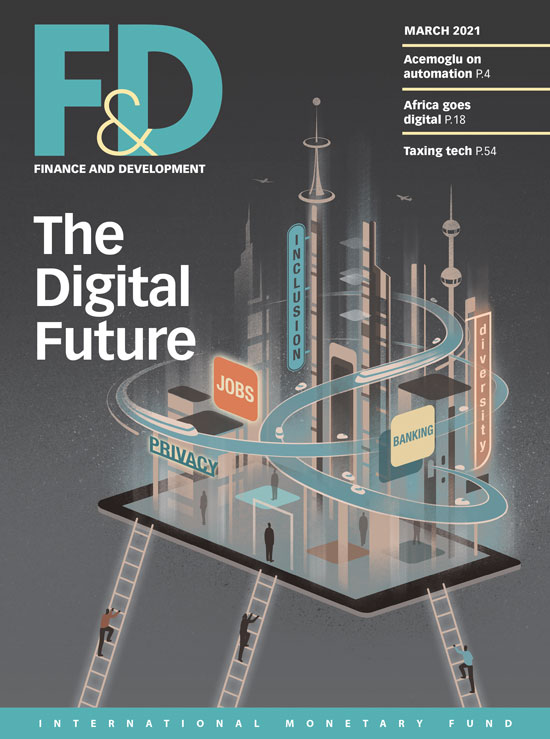The rising incidence of dementia around the world calls for global collaboration and decisive financing
The world has been appropriately preoccupied with the COVID-19 pandemic for nearly two years. But this immediate crisis should not stop us from preparing for another impending public health threat: Alzheimer’s disease and related dementias. Without investment in more effective and accessible treatments and prevention strategies, dementia will slow economic growth and undermine global health and economic equity. Nations must act now to prepare for this underappreciated global health challenge.
Dementia results in significant declines in not only cognitive performance but also overall psychological and physical functioning, inevitably interfering with an individual’s ability to remain independent. The conditions grouped together under Alzheimer’s disease and related dementias (Alzheimer’s dementia, vascular dementia, Lewy body dementia, and frontotemporal dementia) have different underlying pathologies but share important features. All are progressive and ultimately fatal, and all are irreversible and lack treatments. Symptoms of Alzheimer’s disease and related dementias are relatively rare in people younger than 50, but their prevalence practically doubles every five years thereafter.
The first step in addressing a problem is understanding its scope. A common measure of the burden of disease is disability-adjusted life years, which accounts for the impacts on both functioning and life expectancy. Though this is an imperfect measure that can reinforce ableism and ageism, it still provides a chilling snapshot of the damage wrought by dementia.
Dementia is currently the sixth greatest contributor to disability burdens globally among people ages 55 and up. The burden of disability escalates with population aging: dementia contributed 33.1 million disability-adjusted life years in 2019, and if the burden continues to grow at the same rate as in the past decade, it will contribute 55.1 million in 2030, 81.1 million in 2040, and 115.8 million in 2050. Ultimately, the global burden of dementia will more than triple over the next 30 years and it will become the fifth greatest contributor to global disability in this age group (Bloom and others 2021).
Worse yet, the center of gravity for the global disease burden of dementia is shifting from advanced economies to low- and middle-income countries, reflecting changes in the global distribution of older adults. Lower-middle-income countries will account for nearly 30 percent of the growth in dementia-related disability-adjusted life years from 2019 to 50. Upper-middle-income countries will also account for a growing share (12 percent growth during 2019-2050). By contrast, the share in advanced economies will decrease by 30 percent. By 2050, poorer countries are projected to contribute more to the global disease burden of dementia than wealthier ones (Bloom and others, 2021).
Dementia’s economic burden
In addition to the human toll, dementia imposes a substantial economic burden. Researchers have made several efforts to estimate the economic and societal burdens of this group of diseases and forecast the potential future costs. We selected five representative studies that forecast the economic or societal burden of dementia to illustrate the predicted burden (see table).

All the studies forecast substantial increases in the societal and economic burden of dementia in the coming decades. Many find that the burden will more than double between 2020 and 2050, with one study forecasting a nine-fold increase. The per capita estimates of forecast economic and societal burden vary depending on the costs included, the methods used to quantify and extrapolate those costs, and the context in which the burden was estimated. All studies examined direct medical costs, such as outpatient and inpatient care and long-term care costs; some also included nonmedical costs, such as transportation to appointments. Many studies also tried to include costs associated with informal caregiving.
These findings of dementia’s growing economic and societal burdens do not account for some key aspects of their full extent. For example, none of these studies examined the effects of dementia on productive activities outside of the market (for example., uncompensated childcare that older adults provide) or take into account the extent to which individuals value averting dementia. The actual social and economic burden is thus likely to be larger than the studies predict.
These impacts of dementia impede economic growth. The findings above indicate that the rising burden of dementia will deplete the labor force and reduce productivity as individuals take on informal caregiving roles for those with dementia, as well as reduce the capital supply available to invest elsewhere as dementia care consumes substantial resources. These effects will impact global economic equity as the burden begins to shift to lower- and middle-income countries.
Inadequate funding
Given the growing economic and societal burden of dementia, global investment in its treatment, supportive care, and prevention is seriously lacking. Cancers have more than 50 times as many interventional clinical trials registered on ClinicalTrials.gov as dementia, even though the latter contributes approximately eight times more to disability. If dementia received investments comparable to cancer, it would likely initiate a cascade of much-needed treatment breakthroughs.
Funding for addressing dementia care is, unfortunately, inadequate. Multiple randomized, controlled trials demonstrate the benefits of interdisciplinary, team-based care for caregivers and patients. Despite the extensive evidence of their benefit, these approaches to mitigating the costs of dementia are under-implemented. Wider implementation may be hampered by fee-for-service health care payment models, which undervalue team-based care.
In terms of research and development (R&D) for new treatments, dementia has one of the highest failure rates in clinical development. An analysis of 150 trials completed between 1998 and 2017 for Alzheimer’s disease found 146 failures; only 4 were approved by the US Food and Drug Administration (PhRMA 2018). This equates to a 2.7 percent success rate, while the success rate of drug development programs overall (those eventually leading to FDA approval) has been pegged at 13.8 percent (Wong and others 2019).
The disease process for dementia is still not well understood, which could also be holding back R&D. Moreover, while hundreds of candidate therapies demonstrate effectiveness in animal models, the findings do not seem to translate well to humans. R&D is also not well coordinated globally, and data sharing has been limited. Finally, clinical trials for dementia are often prohibitively expensive because of the difficulty in recruiting participants.
Learning from COVID-19
But there are lessons to be learned from the COVID-19 pandemic, which has demonstrated the need for greater planning to escape the woefully suboptimal cycles of neglect and panic: neglecting health challenges until they are upon us, and then panicking to belatedly address them.
Unlike COVID-19-type pandemics, which are characterized as low-probability and high-visibility, the gathering storm of dementia is high-probability and low-visibility. COVID-19 showed that the global community is able to tackle the most complex research challenges rapidly and effectively when the economic peril of inaction is obvious and we invest sufficient resources.
Health care systems worldwide need to begin reconsidering their approach to delivering care to people with dementia. Support for interdisciplinary team-based care for patients and families living with dementia should be a priority, especially in high- and middle-income countries. Disease management programs, which implement standardized approaches to delivering and coordinating care for people with particular chronic diseases, and innovative financing mechanisms (for example, value-based or outcomes-based contracting) are examples of how such care can be scaled up in many settings.
With respect to the development of novel therapies, governments of advanced economies must lead an effort to ramp up spending on dementia. These countries currently bear most of the economic and societal costs of dementia because of their populations’ age structure and thus have the most to gain in the short term. Increased investment would also bolster their economies, offering additional financial benefits.
Advanced economies should invest in three areas to boost dementia R&D: direct funding (especially basic research); stronger incentives for private investment in R&D; and support for patient access to the fruits of R&D, including the absorption of patient costs—particularly in low- and middle-income countries. This support may extend to development of the health care infrastructure. As part of any such initiative, governments of advanced economies should build a global R&D ecosystem that can develop necessary clinical trial infrastructure and repositories of biological samples (biobanks). These governments should encourage investment in many simultaneous drug development projects, which, by diversifying across projects, would mitigate the extreme risk of a lone development project. The necessary capital could be raised through the establishment of a megafund with a government guarantee on the principal investments. Investments in the mega-fund could work like bond financing: investors get their original investment back plus interest from the proceeds of successful drug developments (Fagnan and others 2013).
Such investments are critical to improve global economic equity. Informal caretaking is a large part of the reality of living with dementia, particularly as the disease progresses. Family members often perform that role, and it is intense, difficult, and often heartbreaking work. Women typically bear a disproportionate burden of caregiving in many countries, halting their progress toward equity in the labor force. Equity is particularly relevant in low- and middle-income countries, as many of the risk factors for dementia are associated with systemic disadvantages (including air pollution and lack of access to education or nutritious foods). The economic burden is thus concentrated among those already in the most challenging financial situations, feeding the cycle of poverty. Rich-country efforts to link, scale, and invest from richer countries can help the poorer ones realize their full productive capacity in the coming years.
‘What? So what? Now what?’
In sum, the problem is that dementia is gradually becoming an overwhelming societal burden. Why does this matter? In addition to the enormous health and social burden, dementia is an economic nightmare about to metastasize as the world, especially poorer countries, experiences unprecedented population aging. How do we address this problem? We need optimal—that is to say, massive—investments in care, prevention, and R&D, led by advanced economies that incentivize private investment and prioritize poorer economies’ access to the dividends. It is not just the humanitarian thing to do—it also makes eminently good economic sense.
This article was written by the Data for Decisions, LLC, dementia research team, which comprises David E. Bloom, Janina Broker, Simiao Chen, Rachael Han, Jessica Klusty, Sabrina Malik, and Daniel V. Vigo, in addition to the four listed authors.
References:
Bloom D, Chen S, Counts N, Han R, Malik S, Nandi A, Seligman B, and Vigo D. “Addressing Alzheimer’s disease and related dementias to realise the promise of the UN’s ‘Decade of Healthy Ageing’”, VOX-EU, March 2021.
Cimler R, Maresova P, Kuhnova J, Kuca K. Predictions of Alzheimer’s disease treatment and care costs in European countries. PLoS One. 2019 Jan 25;14(1)
Hurd MD, Martorell P, Langa KM. Monetary costs of dementia in the United States. N Engl J Med. 2013 Aug 1;369(5):489-90.
Jia J, Wei C, Chen S, Li F, Tang YI, Qin W, Zhao L, Jin H, Xu H, Wang F, Zhou A. The cost of Alzheimer's disease in China and re‐estimation of costs worldwide. Alzheimer's & Dementia. 2018 Apr;14(4):483-91.
Fagnan DE, Fernandez JM, Lo AW, Stein RM. Can financial engineering cure cancer? American Economic Review. 2013:103(3):406–11.
PhRMA. Researching Alzheimer’s medicines (pdf). 2018.
Sado M, Ninomiya A, Shikimoto R, Ikeda B, Baba T, Yoshimura K, Mimura M. The estimated cost of dementia in Japan, the most aged society in the world. PloS One. 2018 Nov 12;13(11).
Wimo A, Guerchet M, Ali GC, Wu YT, Prina AM, Winblad B, Jönsson L, Liu Z, Prince M. The worldwide costs of dementia 2015 and comparisons with 2010. Alzheimer's & Dementia. 2017 Jan;13(1):1-7.
Wong CH, Siah KW, Lo AW. Estimation of clinical trial success rates and related parameters. Biostatistics. 2019 Apr 1;20(2):273–86.
Opinions expressed in articles and other materials are those of the authors; they do not necessarily represent the views of the IMF and its Executive Board, or IMF policy.












